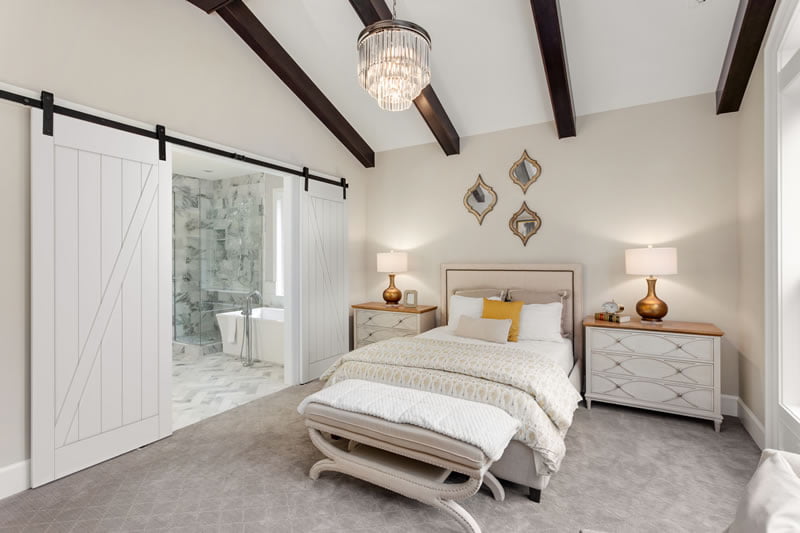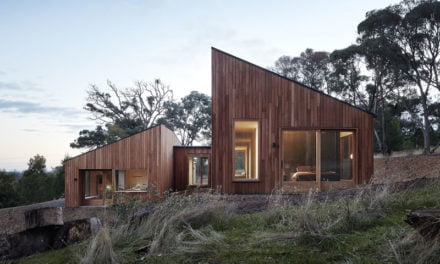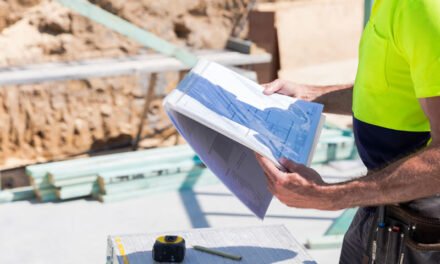Windows and doors are the first line of defence for Australian homes, here’s what manufacturers are focusing on.
It’s hard to imagine a better display of why we need quality windows and doors in our homes than most of Australia over the past two-and-a-half years. Waves of choking smoke have swept over many towns and cities. Then, at different times with Covid, we’ve wanted to keep out threatening germs, while avidly ventilating at others, all while maintaining safety and security as many of us worked from home, with all the expensive equipment that entails
At my house, we quickly worked out our front door wasn’t up to the job in 2019 when bushfire smoke poured through gaps we’d previously been able to dismiss as ‘not that bad’ thanks to Sydney’s idea of cold being 17°C. It was not the best time to realise how much door seals matter.
On top of all this, add in aesthetics. Most of us tend to think of doors and windows as being simply functional, but they can dramatically improve the looks, amenity and value of a house, as well as strongly impact the energy costs of running a home.
All these issues have long been at the forefront of door and window manufacturers’ thinking, so as consumers become more savvy, there is a wealth of product on the market for builders and retailers.
Juggling spaces
“How we use our homes has changed a lot recently,” says Ian Sengstock, marketing manager at Hume Doors & Timber.
While our love for big open plan spaces is still going strong, years of living with them has revealed a few hard truths. The first is that they’re a pain to heat, the second that they quickly lose their charm when you’re on a work Zoom meeting at one end of the room and the kids are playing at the other.
“We’ve seen a big take-up of barn doors and other sliding systems,” Senstock says.
“Part of that has come from people realising, ‘Oh, hang on, we’ve got to condition this massive space…’ They don’t want to be chewing up the environmental resources needed to heat or cool the whole area, so they look for a way to block off that space but still have the open plan when they want it.”
Juggling work and school from home has seen people looking for fast, attractive ways to change the way their homes work. “That’s where we’ve seen these systems really come to the fore,” says Sengstock. “They look brilliant, you can put them in reasonably easily and you wholly block off that space, whether it be a study room at one end of the living space or a workplace.
“For home offices, it also helps the adults when they’ve clocked off for the day. You need to have that separation, because if you don’t close the door, you will be back in there answering emails once the kids are asleep, or you’ve done the washing up.”
Fire risk continues to play a role in door and window designs, with major manufacturers putting out ranges with high BAL ratings. In addition to passing building approvals in BAL-rated areas, there are strong flow-on benefits. Sengstock says, “Obviously these products are also useful in lowering the risk of fire from neighbouring properties in urban situations, but the technology used means the same door will be highly insulating when it comes to keeping heat out in summer, or in during winter and will also help with issues like bushfire smoke or external noise.”
Seal it up
The key technologies behind the advances in doors and windows are mostly down to better cores and more efficient seals.
Cores are in general specialised to their end uses (budget, security, BAL-rating, etc), but seals are the unsung heroes – and an area where precise installation really matters. “We see differences as significant as going from one water performance rating to the next, just because of the way the seals are cut and jointed at the corners,” says Andrew Stewart, technical support manager at SchlegelGeisse.
Specialising in window and door components, the English/Italian firm sells a comprehensive range of seals that are widely used in the industry, but equally as important is the testing side of the business.
“We used to take mobile rigs out and provide a service for anyone who needed it,” Stewart says, “even if they weren’t using our seals. Now we offer an in-house testing facility to the industry instead, which manages the larger sizes of doors and windows and lets companies trial different seals, hardware and systems.”
Many of the customers are joiners and fabricators trialling new production methods or elements, and the test services include pressure testing for wind and water, air leakage for energy ratings and operating force – how hard it is to close windows and doors – as well as verifying seals and hardware on drawings.
“It’s all about making sure the products meet the BCC and AS criteria, as well as matching what the homeowner wants as their priority, be that price, energy efficiency or another focus,” Stewart says.
“The installer still needs to do their job well, which is why a lot of manufacturers are moving to delivering complete systems, so the installer puts in a full unit that includes the seals and so on already in place and checked.”
Seals are also a key part of the newest Hume product range, the Insulator, which will be released this year.
“It’s one of several of our technical products that actively help improve the energy rating of a home,” says Sengstock. “In this case, it’s designed for internal doorways that move between unconditioned and conditioned spaces, for example, the internal access between your garage and your home.”
In the past internal doors didn’t have insulation requirements, which meant most homes had poor heat-transfer management through doors leading to less-insulated spaces. New construction requirements have changed this. “The Insulator system works with any of our internal doors, but it provides that system barrier that allows your air conditioning or heating not to transfer between the two areas”, Sengstock says.
“It relies on highly effective intumescent fire and smoke perimeter seals around the frame, an energy efficient bottom seal and a hardwood bottom sill. Usually, these are designed for external doors. We had to redesign the whole thing to use it internally. I think this will be a very successful product very quickly once it’s launched.”
Up next
When it comes to market drivers, aesthetics and costs are still high on the list, but environmental concerns are now extending beyond energy efficiency.
“There is a focus on materials,” says Sengstock. “Customers are increasingly aware of the whole of life of a product, and that means they are increasingly looking at manufacturers to see what we’re building with, what happens to our waste and what we do with the product when it reaches its end of life.”
Sengstock says that, like Hume, many major Australian manufacturers get a tick when it comes to sourcing materials, with a strong focus on certified materials and chain of custody for imported timbers, but the rest of the process could do with improvement.
“Over the next five years, our agenda is focused on recycling and lowering waste,” he says. “Consumers are very aware they have a part to play when it comes to reforming the building industry and while the younger Millennials, those in their 20s and early 30s, may not be quite ready to buy a house in Australia, but we can see their focus is solidly on environmentally responsible decisions. If we don’t have products available that have genuinely green credentials, we’re going to be left behind.”
Other major trends are targeting wider age groups. Soft close and easy opening doors and windows are appearing in multiple iterations, perfect for situations as diverse as keeping family spaces quiet and helping older residents with less arm strength.
Wider doors and entranceways throughout homes have a similar breadth of audience: yes they mean the home will tick the new accessibility requirements of the NCC (which NSW, SA and WA have sadly opted out of, but which an enormous sector of the market will require), but they also make life better for parents with prams, kids with bikes and anyone who ends up on crutches.
“People like things that give them ease,” Sengstock says. “Our sliding systems have gone very well over the last 24 months, including all that soft touch technology and easy release technology. All those types of things are very well perceived in the marketplace, as are the pivot systems. You can open the front door without needing to put your groceries down. These are simple things that get rid of the little stresses in life.”
New design ideas may take several paths to manufacturers. Builders are the most obvious, as well as architects, stylists and international trends – mostly from Europe. “And our customers,” says Sengstock. “We have great relationships with them and they come up with clever ideas. Though when we’re looking for feedback on new products, it can be hard to get specifics. We’re still working on ways to improve that, which we’ll be rolling out over the next couple of years.
“It’s easy when we trial things like the Insulator with builders, we get very detailed feedback, often on installation time frames.”
The Insulator was trialled for 12 months with a builder specially chosen by Hume. “They were extremely blunt,” Sengstock says. “They’d tell us things like ‘this bit is great, but this bit sucks.’ But that helped us adjust the product. So we know the end result is practical for builders as well as hitting the mark for homeowners.”
Hume runs its own testing facility as well as an R&D department, which helps the company innovate internally. “That team loves to experiment,” Sengstock says. “Sometimes they’ll even muck something up according to their initial plan, but then we’ll look at it and say, ‘hey, you know what?…’ and a new idea is born. We find innovation in all sorts of places.”
For more, visit www.humedoors.com.au and www.schlegel.com












